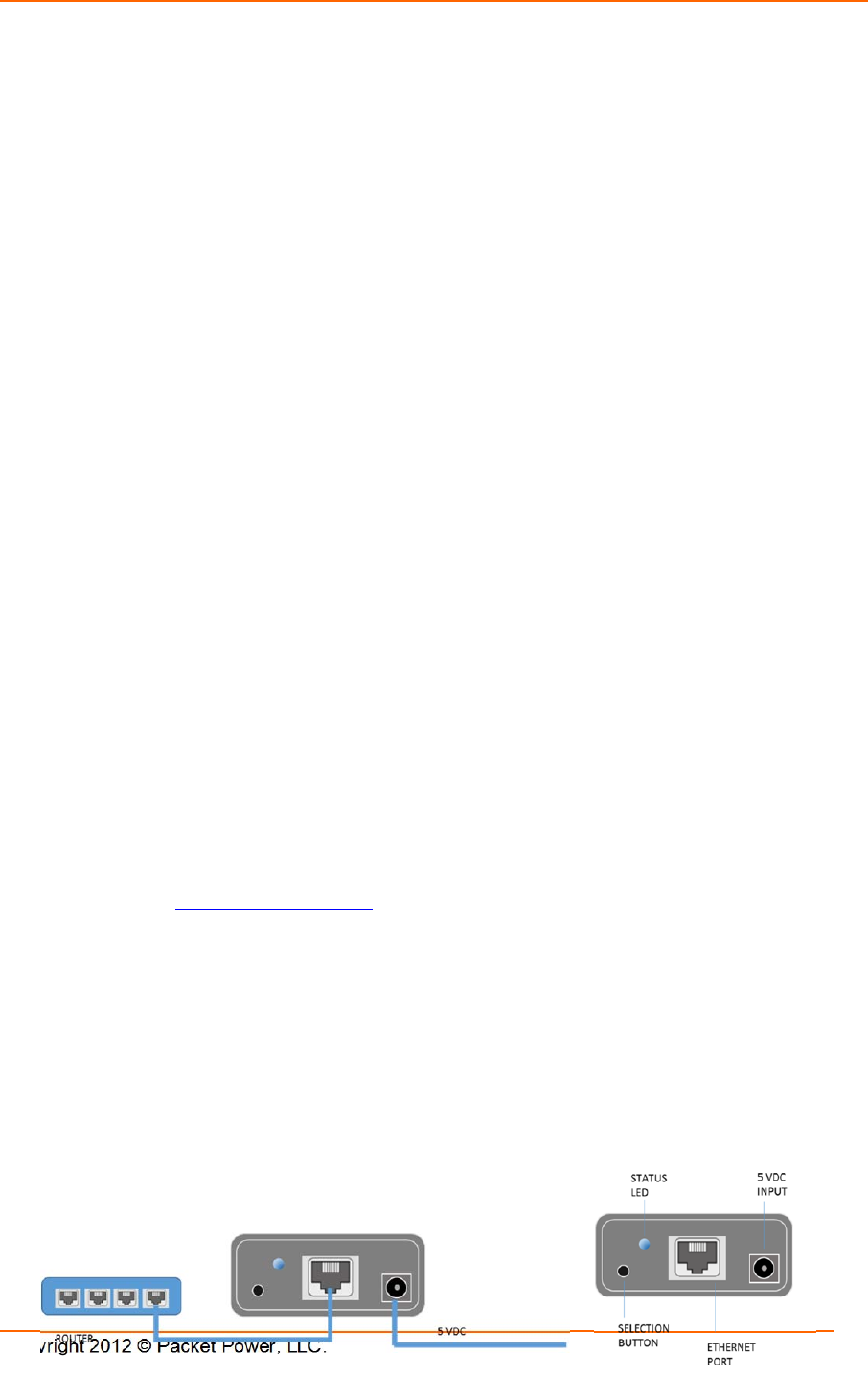User Manual

Packet Power™ Smart Power Cable User’s Manual
Copyright 2012 © Packet Power, LLC.
10
nodes in good radio proximity to the Gateway. Refer to the Gateway Placement manual on the
support section of the website for additional details.
Locate the gateway at a height above monitoring nodes when possible in a location
with the best line of sight view of monitoring nodes.
Do not locate inside metallic cabinets or directly on metal surfaces
Use the Gateway mounting bracket for optimal placement and signal strength.
Redundant Gateways are advised for any critical environment; additional Gateways
should be placed in midway or in the opposite end of the device constellation when
possible.
Gateway Types
There are various Gateway models. These include the standard Gateway designed to communicate
exclusively with the Packet Power EMX portal, Modbus TCP/IP output versions (enterprise and solo),
and SMNP output versions (solo and enterprise). All Gateway versions can communicate with the
EMX portal simultaneously (i.e. a Modbus version can provide ModBus TCP/IP output as well as
communicate with the EMX portal simultaneously).
Gateway Node Capacity
One Gateway can support up to 300 nodes (node count will affect polling time). The network is self-
configuring and will auto recognize new nodes added. Multiple Gateways can be used within a
network for capacity or redundancy and will automatically load balance the nodes.
Updates
The Gateway and Smart Cable firmware is capable of being remotely updated over the network.
Consult the support section of the website for additional details.
Security
The Packet Power network is designed to be the most secure monitoring system available with many
inherent security features exclusive to the architecture that limit any possibility of penetration through
the wireless nodes onto the host network. Additionally the Gateway can be equipped with 128 bit
encryption. Refer to www.packetpower.com for additional explanations on security architecture.
Ethernet Gateway Setup
Connect the Gateway to a router (using a standard network cable) with network access using
the Ethernet port on the back of the Gateway.
Connect the power supply provided or any 5 VDC source to the DC input of the Gateway.
The Gateway can be powered using PoE (Power over Ethernet) using a splitter and 5VDC
PoE source.










